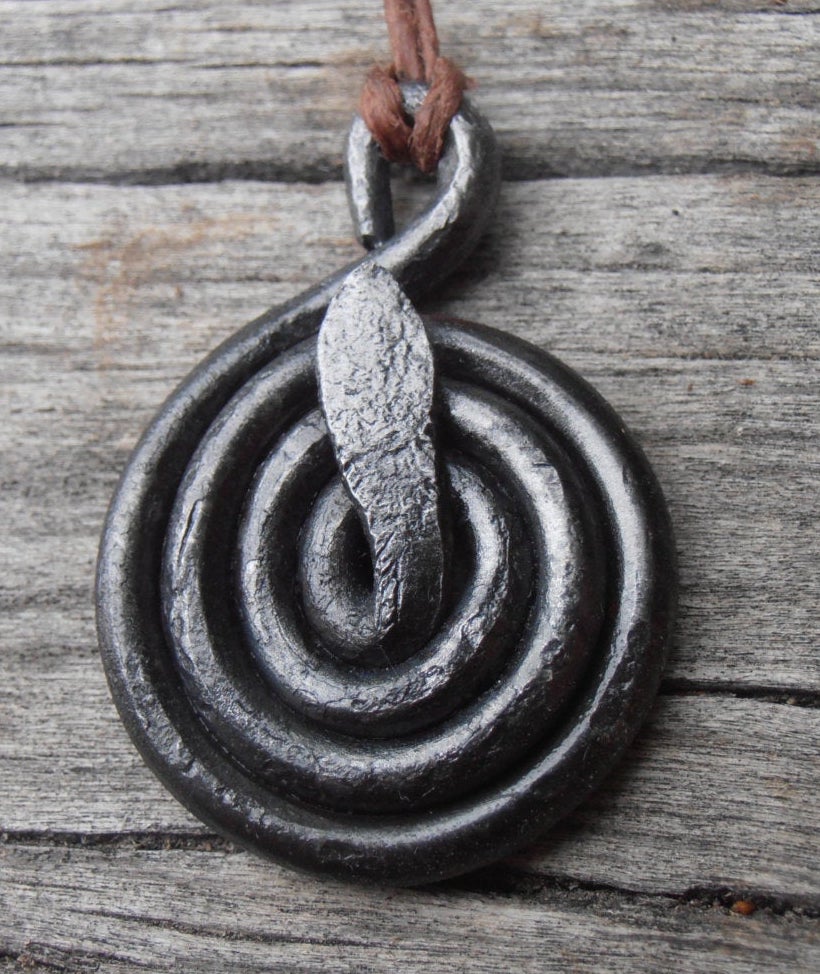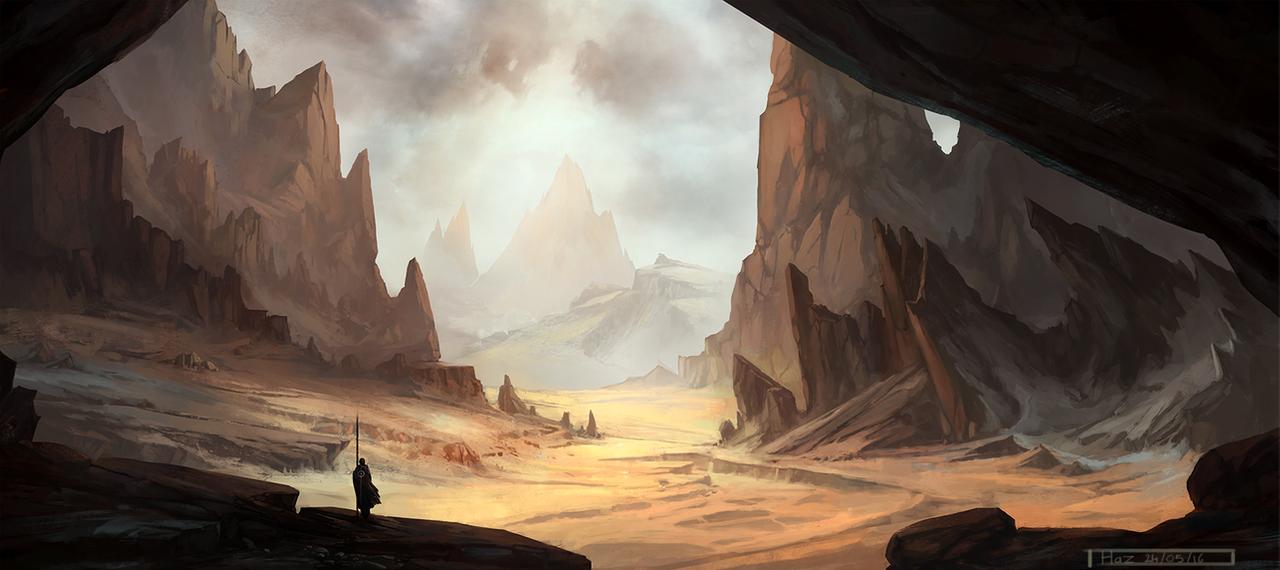Kōsism
"Peace. Patience. Innocence. Wisdom. It is hard to be all these things. But in merely striving towards them, you set yourself upon the Dragon's Path." — Faal Stahdim Ven
Kōsism is an henotheistic religion that teaches that there is only one deity worthy of worship, Kōs, the Coiled Hermit. Kōsites believe that Kōs himself was killed and reborn as a mortal in Nioa during the Mithril Eraand that he lived as a mortal for many centuries. This experience shaped Kōs's understanding of mortality and morality. Kōsism teaches that Kōs is merciful, all-powerful, and unique, and has guided mortals through prophets, revealed scriptures and natural signs. Before becoming a god once more, Kōsism maintains that Kōs imparted these guiding morals to a group of prophets, the Qōsaari. These prophets are regarded as the patriarchs of Kōsism, who then went forth into the world to try and build a society based around the teachings of their god. These teachings are the primary scriptures of Kōsism and are called Faal Stahdim Ven, or "The Dragon's Path." The words of Faal Stahdim Ven are believed to be the verbatim word of God, and the teachings and normative examples of the Qōsaari who came after Kōs's return to godhood.
Kōsism is historically and culturally linked to the dragonborn people of Nioa, a race of mortals who claim to be the descendants from Kōs and his evil mother, the Great Old One Valdra. Like many other faiths, Kōsites believe that Valdra's sealing during the War of the Dawn was but a temporary measure and that she shall break free one day from her bonds within the Material Plane to annihilate all of mortalkind. Kōsites claim that because of Kōs's unique relationship with Valdra and a prophecy that was said to have been uttered by Valdra herself upon Kōs's birth from her dream, Kōs will be the god to return to the Material Plane to destroy Valdra once and for all in the conclusion of the Era of Twilight.
Mythology & Lore
Kōsism asserts that their prime deity, Kōs was born to the Great Old One, Valdra the Dread Dragoness, during the Dawn Era. It is said he was born from a dream, a prophecy that the child would bring about a new age when he sacrificed himself for those he called his own.
During the War of the Dawn, Kōs served as his mother's most trusted ally. Soon Kōs faced the Heavenly Council's most fearsome creation, Oheilion the Bloodied Lord. The two fought a long battle but eventually Kōs was felled at the edge of the Shanindar. Though he was prepared to die, a spark of mercy lit within Oheilion's heart and instead of slaying the Coiled Hermit, he attended to him. From his act of kindness, a friendship was kindled—some claim even a romance. Kōs came to see his mother as nothing more than a destructive force, without any of the honor that Oheilion displayed. He renounced Valdra, and as a sign of his devotion to his new allies, he took a scale from each of his dragons to create the dragonborn, a hard and noble race that would be his children and a promise to the other gods that he would not let the world fall to ruin, lest his children suffer its destruction.
When the final sealing of Valdra occurred, Kōs led the dragonborn and the metallic dragons through the falling earth of the Material Plane and escaped his mother's fate. Valdra in return, breathed a gout of everflame and sent forth those dragons still loyal to her, the chromatics. Today, there is still great enmity between Valdra's chromatic dragons and Kōs's metallic dragons for this betrayal and flight to the Material Plane.
Following the imprisonment of Valdra, the Heavenly Council was unsure of what to do with Kōs. Soon, the disagreement spiraled into conflict, when Telerashi learned that Kōs had lain with her young sister, Lacorré. A great battle took place where the Shattered Straits now stand between Nioa and Hakoa. Followers of the Heavenly Council or Rashi believe that Telerashi defeated Kōs easily and that his soul was shattered apart. But followers of Kōs tell a different story.
Divine Origins
Kōsites believe that Kōs had Telerashi nearly slain, when in her unstoppable rage, Telerashi nearly unsealed Kōs’s mother Valdra. Kōs foresaw the destruction a newly unleashed Valdra would bring upon the world and so sacrificed himself to Telerashi to protect the world. For a deed so noble and pure, Kōsites believe that Kōs’s soul survived the shattering and fled his godly form. For the next thousand year, Kōsites say their lord wandered the world as a mortal spirit, gathering the shards of his godhood and hiding them away, for he did not deem himself worthy of divinity. During this time, he saw his descendants, the dragonborn enslaved by those who claimed to follow the very gods that destroyed him and he was filled with sorrow.
Just before the Sundering Arcana, Kōs in his mortal form, gathered together ten dragonborn of every color in the Holy City of Jeharoa. He called them Qōsaari—"The Prophets" in Old Draconic. He gave them the teachings and philosophies that he had gleaned from walking the world as a mortal in the form of a holy text, Faal Stahdim Ven, "The Dragon's Path." Upon giving this text to his followers, the Sundering Arcana occurred as if by design, and Kōs's mortal body was filled with divine and arcane power. Kōs then died and rose once more from the grave, this time reborn as a true god and the deity of all those that would call themselves Kōsites.
Kōsites now believe that one day, Kōs will return to the Material Plane when Valdra is unleashed and defeat her himself, just as Valdra's prophecy suggests. After this War of the Twilight, Kōsism reports that Kōs will gather all of his children to him and forge a new world, a paradise for only those worthy enough to call him Creator.
Tenets of Faith
To follow the philosophy of Faal Stahdim Ven and the teachings of the Qōsaari is to follow the Will of Kōs himself. Faal Stahdim Ven teaches Kōsites to act as Kōs did when he walked the earth as a mortal: to be merciful, assertive, and wise. It asks that Kōsites work to bring peace to the world. Kōsism emphasizes that to be as Kōs is to be a person of conscious and discipline, to be patient before the striking action. Most of all, Kōsism asserts that one must always strive to protect the innocent and those of your community and family, and to seek healing before retribution.
Priesthood
Even compared to other deities, Kōs remains an extraordinarily removed deity. Signs of his presence and miraculous work can of course be found, but he rarely, if ever, speaks directly to his followers. As a result, clergy of Kōs do not act as intermediaries between Kōs and his followers. Most clerics of Kōsism seek to emulate Kōs through good works, righteous action, and communal unity. These clerics are called Wardens and are pillars of the community. They are expressly forbidden from seeking new converts, and are asked only to watch over the community within which they find themselves. Conversion is considered a rare event, as Kōsism is a largely ethnospecific religion. Wardens are distinguished in Qartagonian communities by wearing black blindfolds with serpent eye markings over slits for vision.
Some Kōsites take this further still, and have formed military units of paladins and holy warriors with the intention of defending the faithful from any outsiders. Four Orders with four distinct Oaths exist in Kōsism: the Sandswords, who claim an Oath of Devotion; the Janassars, who claim an Oath of Conquest; the Medjai, who claim an Oath of the Ancients; and the Mamluks, who claim an Oath of Redemption. Each Order has their own seal and armor specific to their duties. Some wear veils to assure the safety of their families while others bear their faces proudly, and even tattoo sacred verses and designs on their skin and scales.
Other Kōsites shun this aspect of Kōsism and prefer to meditate on the "hidden passages" of Faal Stahdim Ven. Unlike the Heavenly Codex, Faal Stahdim Ven is comprised mainly philosophies and instructions on how to live a virtuous life, for they are actually the thoughts and believes that the god himself had when he walked as a mortal during the Palladian Era. Yet the words of Faal Stahdim Ven are incredibly dense and cryptic, requiring years of study to fully grasp. Those dedicated to pursuing the hidden, "true" meaning buried within their holy texts live out in the desert as ascetic monks and scholars, called cenobites. They are usually marked by their austere and simple garment and their smell.
Political Influence & Intrigue
Kōsite regions tend to be ruled with by a theocratic regime. In Qartago, the rulers are believed to be the descendants of the original Qōsaari, and are called Emirs. Kōsite regimes usually try to rule through enacting portions of Faal Stahdim Ven upon the people through legal means. Faal Stahdim Ven is not explicit in how Kōsites should treat members of the Heavenly Council. Faal Stahdim Ven is highly critical of the Council itself, but overall emphasizes compassion and the commitment to enlightenment and good deeds through example. This has resulted in conflicts between various emirs as well as peace at times between Kōsites and adherents to the Heavenly Council. Moreover, the proximity not only of the Qartagonian Emirates to the largely Council-led Pilgrim States and the Zwahi Shanindar Empire has led to large-scale conflicts over the past three hundred years, and continues to be a source of friction and potentially all out war in the future.

Drem Kōs Voth Hi
Founding Date
997 ACE
Type
Religious, Other
Alternative Names
The Dragon's Path
Demonym
Kōsite
Subsidiary Organizations
Permeated Organizations
Deities
Divines
Location
Notable Members
Related Ethnicities


Comments